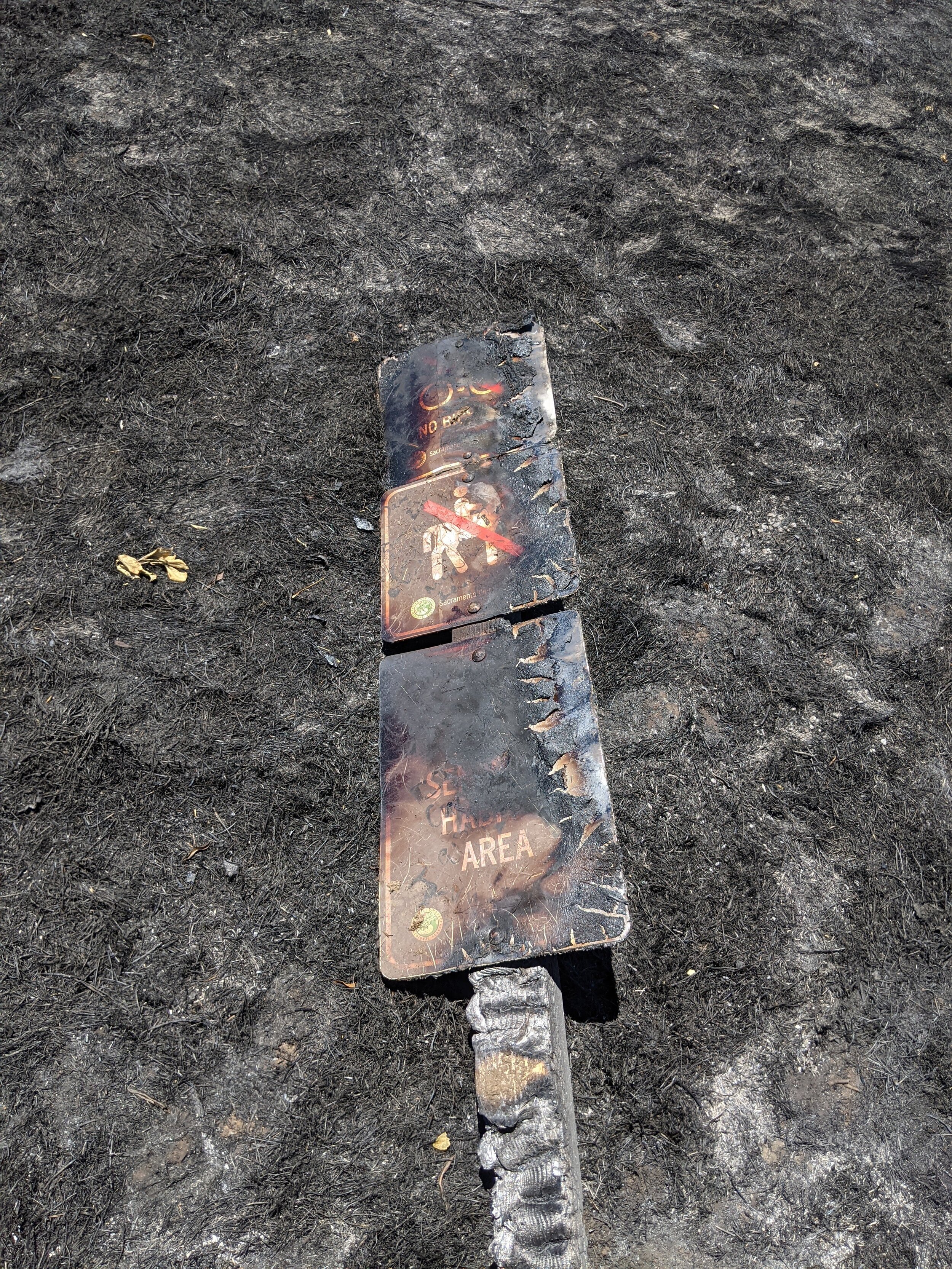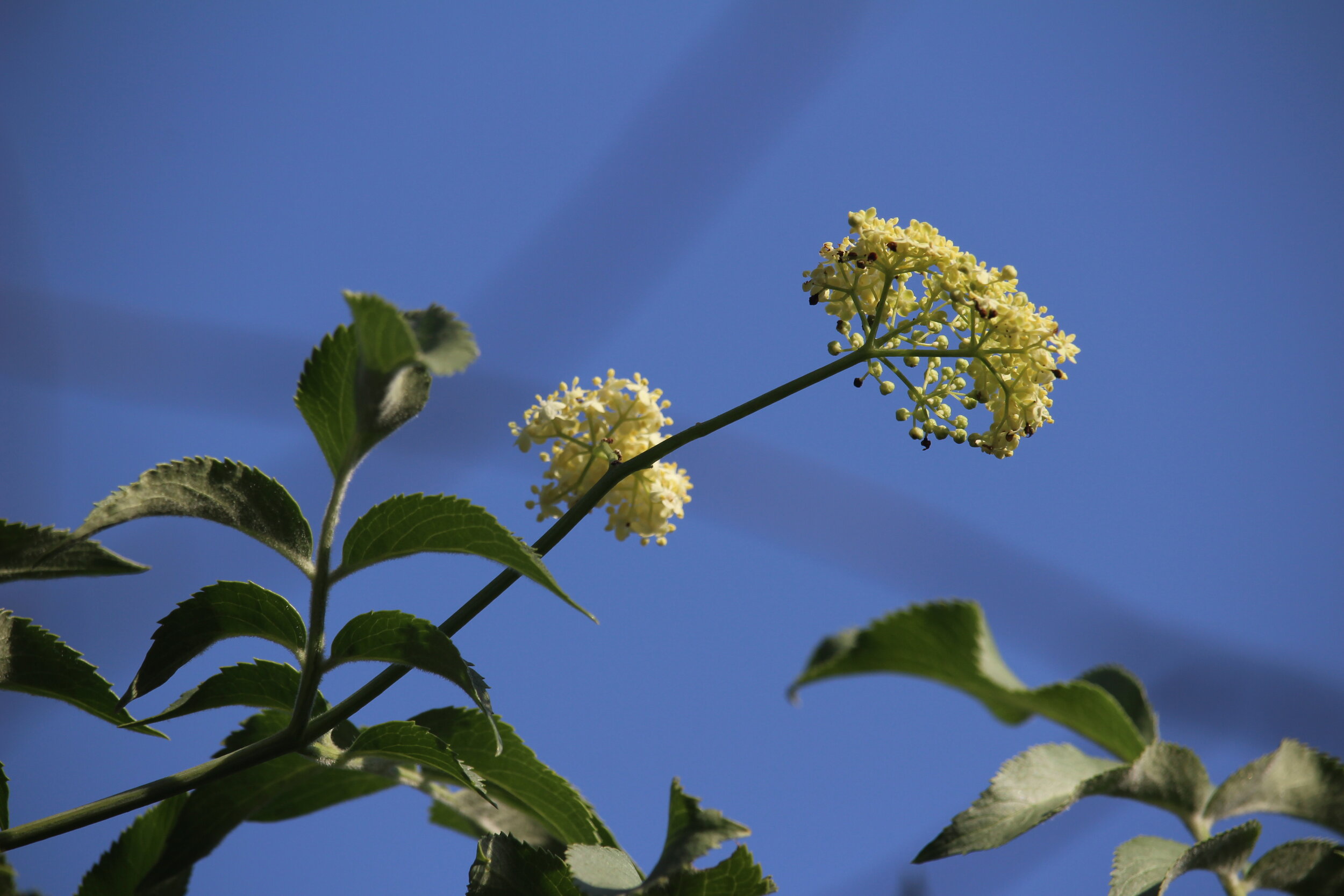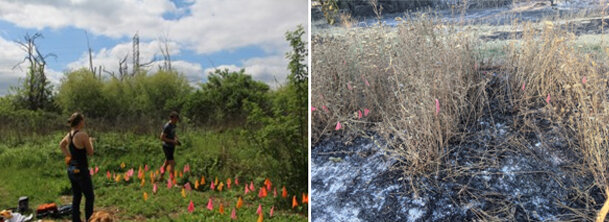
Fire Resiliency
Revegetation and Natural Recruitment after Fire
California is a culturized landscape. California Indians utilized Traditional Fire Management to tend culturally important species for thousands of years. Bushy Lake is the traditional Territory of the Nissenan Maidu people. Results of the monitoring will be incorporated into the draft Conceptual Restoration Project planting design to promote fire resiliency. Plant species selection will focus on showcasing Native American cultural knowledge and ethnobotany to the public. Recommendations for a fire resilient and culturally significant plant palette and planting specifications will be included in the final Restoration Project monitoring, design and implementation.
Pictured at left: California Mugwort (Artemisia douglasiana)
Ecological Restoration
The area around Bushy Lake provides a suitable location for ecological restoration using native plant species that are resilient to fire. Before European settlement, the Nissenan, Miwok and Maidu tribes practiced Traditional Resource Management through burning and other tending practices of culturally significant resources. Plants that are outstandingly resilient to wildfires and that are culturally significant include Santa Barbara sedge (Carex barbarae), California mugwort (Artemisia douglasiana), willow (Salix spp), elderberry (Sambucus nigra), California grape (Vitis californica) and California blackberry (Rubus ursinus). These native species have adapted to frequent fires from thousands of years of relationship with California Indians who practiced Traditional Fire Management. These species were chosen for understory restoration because they are resilient to fire. Project experiments will provide a visible example of the proactive effort to manage fire in the parkway using culturally significant and fire adapted plants, with the help volunteer participation, public education and monitoring.
Pictured at right: Black elderberry (Sambucus nigra). This fire resilient native plant provides habitat for the Valley Elderberry Longhorn Beetle. The flowers, berries, and stems are tended to provide important cultural resources.
Native Californian Traditional Fire Management
We will use data collected since 2016 to redesign and implement native revegetation and monitor natural revegetation and recruitment of native vegetation. The original data indicated that fifty-two percent of the plants sampled were native. We are concerned that the fires may add nitrogen to the soils and simulate propagation of invasive non-native species. We are monitoring and weeding poison hemlock (Conium maculatum), (23% relative cover, prickly lettuce (Lactuca serriola), tall whitetop (Lepidium latifolium), Himalayan blackberry (Rubus armeniacus). Without management, these tall invasive species are shading and eliminating the native understory species.
Funds were awarded to Dr. Michelle Stevens from Sacramento State Presidents’ Emergency Fund to conduct restoration and study natural regeneration in the pilot project area after recent fires. Natural recruitment is already occurring in July and August with no rain (see below). This provides a good opportunity to test our fire resilience plant palette design, based on native plants adapted to Native Californian Traditional Fire Management (Stevens 2019, Zedler and Stevens 2018).
Observed Natural Recruitment:
Mugwort (Artemisia douglasiana)
Willow (Salix species)
California Grape (Vitis californica)
Elderberry (Sambucus nigra subsp. caerulea)
Gumweed (Grindelia camporum)
White Root (Carex barbarae)
Various species sprouting from rhizomes (underground stems)
Pictured at left: Willow (Salix species)
2021 BUSHY LAKE FIRE: BEFORE AND AFTER
Left: CSU Sacramento students Alexandra von Ehrenkrook (left) and Jake Kincaid (right) working with newly planted pilot restoration plots, Spring 2020 (pictured by Michelle Stevens. Right: Same restoration plots post fire (pictured by Alexandra von Ehrenkrook).
2021 BUSHY LAKE FIRE: BEFORE AND AFTER
Left: Dr. Michelle Stevens and CSU Sacramento students planting native vegetation, Spring 2021. Right: Same vegetation plots post fire. (pictured by Kathleen Colima)
2021 BUSHY LAKE FIRE: BEFORE AND AFTER
Left: Dr. Michelle Stevens (left) and research assistant Alexandra von Ehrenkrook (right) observing native plant plots, Spring 2020 (pictured by Jake Kincaid). Right: Same native vegetation plots post fire (pictured Michelle Stevens).
2021 BUSHY LAKE FIRE: BEFORE AND AFTER
Left: Basking turtle observation site 1 on May 1st 2021. Right: Turtle observation site 1 post fire, pictured on June 8th 2021. (pictured by Kathleen Colima)
2021 BUSHY LAKE FIRE: BEFORE AND AFTER
Left: Entrance to basking turtle observation site 2 on April 2nd 2021. Right: Entrance to turtle observation site 2 to post fire, pictured June 8th 2021. (pictured by Kathleen Colima)
2021 BUSHY LAKE FIRE: BEFORE AND AFTER
Left: The unburned levee, a critical turtle nesting area. Right: Burned levee post fire. (pictured by Kathleen Colima)
2021 BUSHY LAKE FIRE: BEFORE AND AFTER
Left: Predated turtle nest. Right: Burned turtle nest that became predated. (pictured by Kathleen Colima)










